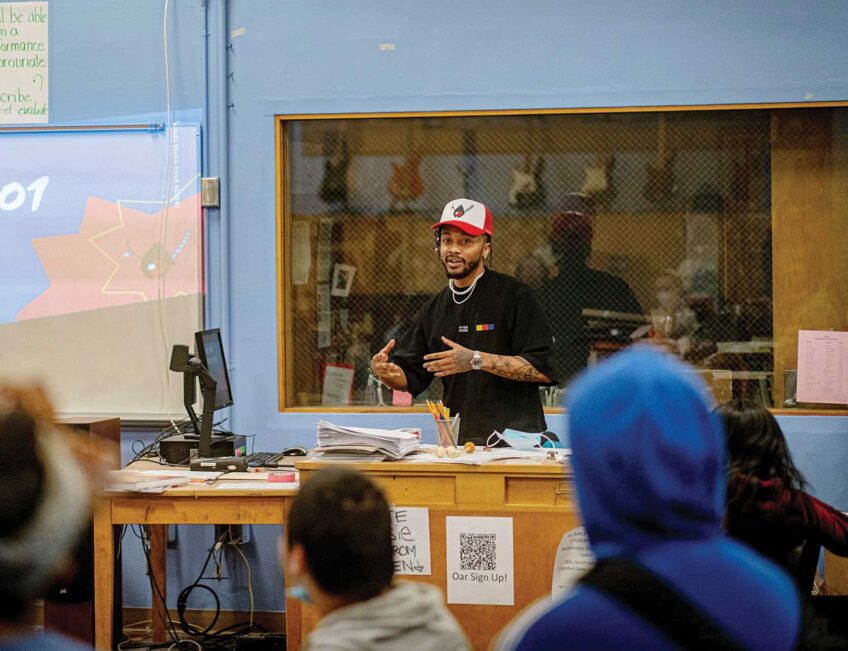Charter school proponents push ballot question
Measure would raise cap on new schools
A coalition is pushing forward with an initiative that would increase the number of charter schools in Massachusetts, collecting signatures necessary to secure a spot on the 2016 ballot.
The proposal, “An Act to Allow Fair Access to Public Charter Schools,” calls for the Board of Elementary and Secondary Education to raise the cap on charter school growth and allow up to 12 new institutions or expansions per year. This, supporters say, will help meet demand at a time when they say more than 37,000 students across the state and 13,000 in Boston sit on waiting lists for charter schools.
“For a long time in the state of Massachusetts, we have talked about having quality education for all students,” says Thabiti Brown, principal of Codman Academy Charter School in Dorchester and a member of the board of the Massachusetts Charter School Association. “We know that black and brown children in particular haven’t had access to the highest quality education possible in the city of Boston and in the state of Massachusetts, and we don’t want that to continue.”
Although the proposal would affect all students across the state, Brown says it would particularly benefit communities of color because charter school growth would be focused on the lowest performing 25 percent of public school districts.
A recent study from Stanford University shows high levels of growth in reading and math at Boston charter schools, which were the equivalent of 225 additional days of math instruction and 165 additional days of reading instruction than traditional public schools.
“We know based on lots of different studies that charters are providing outstanding quality for students, especially when compared to traditional public schools,” says Brown. “We’ve proven that we are able to grow our students at a really high rate. So we are in prime position to support the growth of black and Latino students, in particular, and all our students across the state.”
“We can’t wait for our children to flounder, we just can’t,” he goes on. “The graduation rates are too low.”
But opponents of the plan say the expansion of charter schools would take money away from already cash-strapped public schools and exacerbate educational inequality.
In 2014, Boston Public Schools, which serve 56,000 students, lost $87.5 million in state aid to charter schools, which teach 7,500.
Funding issues
Tom Gosnell, president of the American Federation of Teachers Massachusetts, says that opening more charter schools would “drain” the public schools of even more money — up to $100 million per year. And this funding is necessary to educate the wide cross-section of students who come through public schools, including those with special needs or English language learners.
“The critical thing is that the public schools take every student who applies,” says Gosnell. “That is a big difference from the charter schools.”
Brown says this loss of funds shouldn’t affect public schools. “The money follows the students,” he says. “There’s no money being taken away if there’s no child to support.”
He also pointed to the legislature’s program to partially reimburse public schools for funds lost to charters. However, the state has failed to come up with all of this money in recent years.
“It’s basically putting the nail in the coffin for us,” says Angelina Camacho, co-chair of the Citywide Parent Council of Boston Public Schools. She explains that as state funding decreases, parents are expected to make up the difference — a significant burden in a district where 78 percent of families are low-income.
Camacho also points out that even 12 new charter schools per year won’t cover all students. “What happens to our parents when this expansion still doesn’t meet their needs?” she says. Brown concedes that it would take “many, many years” to completely eliminate the charter school waiting lists.
Gosnell sees another problem with the ballot initiative. The proposal doesn’t specify where the 12 new charter schools per year would be located, so it’s possible they could be concentrated in one city or town. “Imagine what this would do to the city of Boston, Chelsea or Holyoke,” he says. “It could have a devastating impact on those districts, and on the students in those public schools.”
Instead of focusing on charter schools, Gosnell says the state should use its resources to combat poverty, since its prevalence “is bound to have an effect on what happens in the public schools.”
For Camacho, the solution is clear — build equity first. “Diversity in the type of school choices that are offered in and of itself is not a bad thing,” she says. “But we need to do more work around making sure that there is equity and quality, no matter what your choice is, before we start expanding the charter model.”






